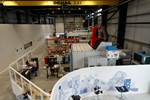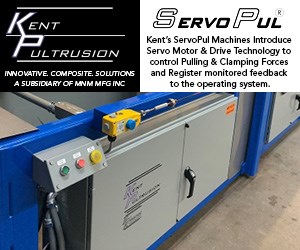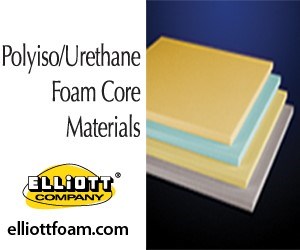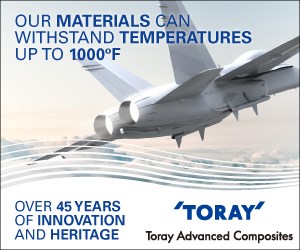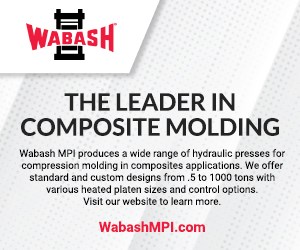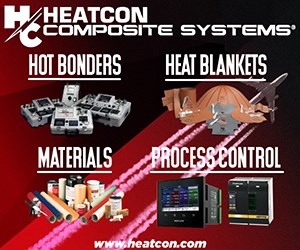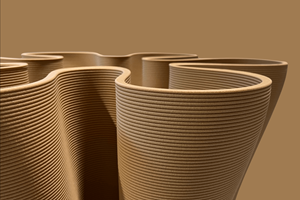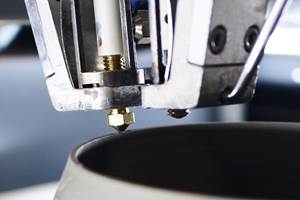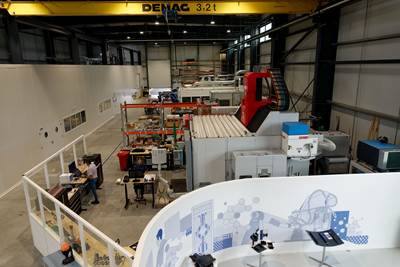New trucks from Toyota and Honda get it Right - with composite beds
David White writes this article in his capacity as executive director of the Automotive Composites Alliance (ACA), a nonprofit association chartered to promote the uses and benefits of composites in the automotive industry. Also the VP of sales and marketing for Meridian Automotive Systems (Dearborn, Mich.), White
Leave it to Toyota and Honda to offer what Ford, GM and Chrysler have talked about -- an all-composite pickup bed on both the newly redesigned Toyota Tacoma and the all-new Honda Ridgeline midsize pickup trucks. We're not talking about a composite "bed liner," we're talking about a complete structure of composite, replacing the "traditional" steel bed. No need for a plastic liner, which adds cost and weight, and provides only a cosmetic fix for the underlying issues -- rust, corrosion and dents/dings to the traditional steel bed.
There has been little doubt for some time that a composite is a good choice for a pickup bed. All the original equipment manufacturers (OEMs) conduct grueling, real-time structural and performance testing at their off-road test facilities. Not only do composite truck beds pass these tests with flying colors, they also offer greater resistance to dents and higher impact strength than steel, and they are 100 percent resistant to rust and almost all corrosion. Further, they are unaffected by most materials that could find their way into a pickup bed, such as petroleum products and gardening chemicals. Designers can optimize weight savings, which run as high as 35 percent, and take advantage of parts consolidation and noise/vibration/harshness (NVH) damping properties. With this weight savings come obvious advantages, including increased fuel economy, better front/rear weight ratios and improved horsepower-to-weight ratios -- more performance. Molding composite beds offers the opportunity to mold-in features not available in steel beds, such as side and bed-floor storage compartments and grained, non-skid surfaces.
So why Honda and Toyota, and not the Big Three? From a historical perspective, it's no surprise. I recently reviewed CT's February issue from a year ago, where I wrote in this column that "Ford, GM and DaimlerChrysler have all celebrated their centennials, a milestone that represents 100 years of stamping, grinding, forging, welding, assembling and painting steel." (See CT February 2004, p. 7). The Big Three know steel. They have billions of capital dollars in steel processing technology and decades of investment in training a workforce to optimize its use. Little wonder, then, that in the past they've chosen to win, lose or draw with steel as their first, second and third material choice for the majority of the vehicle.
For many years, this was a defensible strategy. Steel was cheap and plentiful. Car owners took it for granted that their vehicles would rust. Gas was cheap, thus weight was relatively unimportant. And … there weren't many alternatives to steel. That was then.
Today, however, global market dynamics have turned traditional thinking upside down. Thankfully, many more lightweight, cost-effective material choices are available, including thermoset composites, thermoplastics (reinforced and unreinforced), aluminum, magnesium and hybrid materials. Growth in these materials is increasing and will continue to increase as OEMs take advantage of the unique features and benefits of these materials.
One thing hasn't changed: Cost was, is and always will be king. The U.S. light vehicle market is so competitive that the OEMs will always be driven to be the low-cost producer. Since over 50 percent of their costs are purchased materials, they watch every penny and are disciplined to contain new vehicle costs. While molds for composites are significantly less expensive than steel stamping dies, that fact doesn't entirely offset the cost of composite materials, so composites remain more expensive than steel on a lb to lb basis. But that delta is quickly disappearing, because steel prices are on the rise. They've gone up almost 50 percent in the past year alone, primarily driven by China's economic expansion, and prices may continue to trend upward. Gasoline prices also have increased significantly, putting a premium on vehicle weight reduction. Suddenly, alternatives to traditional materials are less a luxury than an imperative. This, as they say, is now.
Since their first entry into automotive applications, composites have proved consistently to be lighter and more durable than steel. But with today's shifting economic climate -- not to mention the nudge from Honda and Toyota -- the Big Three should begin to get past outdated assumptions based on initial material cost to see composites as the greater lifetime ownership value, as well.
I foresee more and exciting applications of composites for pickup beds in the near future. More importantly, what is true for pickup beds should prove true in many other light vehicle/heavy truck applications where lightweight, low investment, high strength and corrosion-free properties are design imperatives.
Related Content
Sulapac introduces Sulapac Flow 1.7 to replace PLA, ABS and PP in FDM, FGF
Available as filament and granules for extrusion, new wood composite matches properties yet is compostable, eliminates microplastics and reduces carbon footprint.
Read MoreA new era for ceramic matrix composites
CMC is expanding, with new fiber production in Europe, faster processes and higher temperature materials enabling applications for industry, hypersonics and New Space.
Read MoreJeep all-composite roof receivers achieve steel performance at low mass
Ultrashort carbon fiber/PPA replaces steel on rooftop brackets to hold Jeep soft tops, hardtops.
Read MoreCombining multifunctional thermoplastic composites, additive manufacturing for next-gen airframe structures
The DOMMINIO project combines AFP with 3D printed gyroid cores, embedded SHM sensors and smart materials for induction-driven disassembly of parts at end of life.
Read MoreRead Next
VIDEO: High-volume processing for fiberglass components
Cannon Ergos, a company specializing in high-ton presses and equipment for composites fabrication and plastics processing, displayed automotive and industrial components at CAMX 2024.
Read MorePlant tour: Daher Shap’in TechCenter and composites production plant, Saint-Aignan-de-Grandlieu, France
Co-located R&D and production advance OOA thermosets, thermoplastics, welding, recycling and digital technologies for faster processing and certification of lighter, more sustainable composites.
Read More“Structured air” TPS safeguards composite structures
Powered by an 85% air/15% pure polyimide aerogel, Blueshift’s novel material system protects structures during transient thermal events from -200°C to beyond 2400°C for rockets, battery boxes and more.
Read More

